Vaginal discharge is a mixture of liquid, cells, and bacteria that lubricates and protects the vagina. This mixture is constantly produced by the cells of the vagina and cervix and it exits the body through the vaginal opening. The composition, amount, and quality of discharge vary between individuals as well as through the various stages of sexual and reproductive development. Normal vaginal discharge may have a thinner, watery consistency or a thick, sticky consistency, and may be clear or white in color. Normal vaginal discharge may be large in volume but typically does not have a strong odor, nor is it typically associated with itching or pain. While most discharge represents normal functioning of the body, some changes in discharge can reflect infection or other pathological processes
What infections cause vaginal discharge to change?
There are a number of infections that cause vaginal discharge to change or become unpleasant. Many of these infections can be caused by having sex with someone who has the infection. This graph describes a number of common vaginal infections
Yeast Infection
- Is caused by having sex with an infected person? No
- What does discharge look like? Thick, white, like cottage cheese
- How is the infection treated? Antifungal vaginal creams or pills
Trichomoniasis (“Trick”)
- Is caused by having sex with an infected person? Yes
- What does discharge look like? Green, yellow, or gray in color; frothy
- How is the infection treated? Antibiotics ordered by your doctor
Bacterial vaginosis (Gardnerella or BV)
- Is caused by having sex with an infected person? Probably not
- What does discharge look like? White discharge that smells fishy
- How is the infection treated? Antibiotic pills or vaginal cream ordered by your doctor
Gonorrhea (Clap)
- Is caused by having sex with an infected person? Yes
- What does discharge look like? Cloudy or yellow, but often no symptoms. If not treated, the infection may spread, causing pelvic inflammatory disease with pelvic pain.
- How is the infection treated? Antibiotic pills or shots ordered by your doctor
Chlamydia (Kla-mid-ee-ah)
- Is caused by having sex with an infected person? Yes
- What does discharge look like? Often no symptoms. If not treated, the infection may spread, causing pelvic inflammatory disease with pelvic pain.
- How is the infection treated? Antibiotic pills ordered by your doctor
Causes of vaginal discharge
Non-infective
-
Physiological
-
Cervical ectopy
-
Foreign bodies, such as retained tampon
-
Vulval dermatitis
Non-sexually transmitted infection
-
Bacterial vaginosis
-
Candida infections
Sexually transmitted infection
-
Chlamydia trachomatis
-
Neisseria gonorrhoeae
-
Trichomonas vaginalis
Causes abnormal discharge
According to the causes of infection
Non-infective
-
Physiological
-
Cervical ectopy
-
Foreign bodies, such as retained tampon
-
Vulval dermatitis
Non-sexually transmitted infection
-
Bacterial vaginosis
-
Candida infections
Sexually transmitted infection
-
Chlamydia trachomatis
-
Neisseria gonorrhoeae
-
Trichomonas vaginalis
According to the overall condition
Any change in the vagina’s balance of normal bacteria can affect the smell, color, or discharge texture. These are a few of the things that can upset that balance:
- Antibiotic or steroid use
- Bacterial vaginosis, a bacterial infection more common in pregnant women or women who have multiple sexual partners
- Birth control pills
- Cervical cancer
- Chlamydia or gonorrhea (STDs), sexually transmitted infections
- Diabetes
- Douches, scented soaps or lotions, bubble bath
- Pelvic infection after surgery
- Pelvic inflammatory disease (PID)
- Trichomoniasis, a parasitic infection typically contracted and caused by having unprotected sex
- Vaginal atrophy, the thinning and drying out of the vaginal walls during menopause
- Vaginitis, irritation in or around the vagina
- Yeast infections
See the chart below to learn more about what a particular type of discharge might mean.
Types of Abnormal Discharge and Their Possible Causes
| Type of Discharge | What It Might Mean | Other Symptoms |
| Bloody or brown | Irregular menstrual cycles, or less often, cervical or endometrial cancer | Abnormal vaginal bleeding, pelvic pain |
| Cloudy or yellow | Gonorrhea | Bleeding between periods, urinary incontinence, pelvic pain |
| Frothy, yellow or greenish with a bad smell | Trichomoniasis | Pain and itching while urinating |
| Pink | Shedding of the uterine lining after childbirth (lochia) | |
| Thick, white, cheesy | Yeast infection | Swelling and pain around the vulva, itching, painful sexual intercourse |
| White, gray, or yellow with fishy odor | Bacterial vaginosis | Itching or burning, redness and swelling of the vagina or vulva |
Types of abnormal discharge and their possible causes
Any change in the balance of normal bacteria in the vagina can affect the smell, colour, or texture of the discharge. These are a few of the things that can upset the balance:
| Type of Discharge | What It Might Mean | Other Symptoms |
| Bloody or brown | Irregular menstrual cycles, or less often, cervical or endometrial cancer | Irregular vaginal bleeding, pelvic pain |
| Cloudy or yellow | Gonorrhoea | Bleeding between periods, painful urination |
| Frothy, yellow or greenish with a bad smell | Trichomoniasis | Pain and itching while urinating |
| Pink | Shedding of the uterine lining after childbirth (lochia) | |
| Thick, white, cheesy | Yeast infection | Swelling and pain around the vulva, itching, painful sexual intercourse |
| White, grey, or yellow with a fishy odor | Bacterial vaginosis | Itching or burning, redness and swelling of the vagina or vulva |
Warning signs
- In girls, a fever or a yellow or green discharge with a fishy odor (because they may have a sexually transmitted disease resulting from sexual abuse)
- Severe abdominal or pelvic pain or pain, particularly if it lasts more than 2 hours
- Drainage of pus, a fever, or other signs of infection in the reproductive organs
- Stool in the vaginal discharge
- A bloody discharge after menopause
- Looks foamy or like cottage cheese
- Is green, yellow, or gray in color
- Causes swelling
- Causes itching
In women with an abnormal discharge, certain characteristics are cause for concern
Diagnosis of Vaginal Discharge
History
Ask the patient about itching, odor, the color of discharge, painful intercourse, or spotting after intercourse.
- Yeast causes intense itching with a cheesy, dry discharge.
-
Gardnerella causes a foul-smelling, thin white discharge.
-
Trichomonas gives irritation and frothy white discharge.
-
Foreign body (lost tampon) causes a foul-smelling black discharge.
-
Cervicitis causes a nondescript discharge with deep dyspareunia
-
Chlamydia may cause a purulent vaginal discharge, post-coital spotting, and deep dyspareunia.
-
Gonorrhea may cause a purulent vaginal discharge and deep dyspareunia.
-
Cervical ectropion causes a mucous, asymptomatic discharge.
Physical Exam
Inspect carefully for the presence of lesions, foreign bodies and odor. Palpate to determine cervical tenderness.
-
Yeast has a thick white cottage-cheese discharge and red vulva.
-
Gardnerella has a foul-smelling, thin discharge.
-
Trichomonas has a profuse, bubbly, frothy white discharge.
-
Foreign body is obvious and has a terrible odor.
-
Cervicitis has a mucopurulent cervical discharge and the cervix is tender to touch.
-
Chlamydia causes a friable cervix but often has no other findings.
-
Gonorrhea causes a mucopurulent cervical discharge and the cervix may be tender to touch.
-
Cervical ectropion looks like a non-tender, fiery-red, friable button of tissue surrounding the cervical os.
-
Infected/Rejected IUD demonstrates a mucopurulent cervical discharge in the presence of an IUD. The uterus is mildly tender.
Chancroid appears as an ulcer with irregular margins, dirty-gray necrotic base and tenderness.
Laboratory
Obtain cultures for chlamydia, gonorrhea, and Strept. You may test the vaginal discharge in any of 4 different ways:
-
Test the pH. If >5.0, this suggests Gardnerella.
-
Mix one drop of KOH with some of the discharge on a microscope slide. The release of a bad-smelling odor confirms Gardnerella.
-
Examine the KOH preparation under the microscope (“Wet Mount”). Multiple strands of thread-like hyphae confirm the presence of yeast.
-
Mix one drop of saline with some discharge (“Wet Mount”). Under the microscope, large (bigger than WBCs), moving micro-organisms with four flagella are trichomonads. Vaginal epithelial cells studded with coccoid bacteria are “clue cells” signifying Gardnerella.
Differential diagnosis of vulvovaginal symptoms. The parameters listed here can be useful for the rapid diagnosis of vulvovaginal symptoms. It is important to differentiate aerobic vaginitis from atrophic vaginitis. The latter often presents with identical symptoms in women with estrogen deficiency (e.g., postpartum, during the lactation period, in postmenopausal women) and can usually be treated effectively with local application of estriol.
| Bacterial vaginosis | Vulvovaginal candidiasis | Trichomoniasis | Aerobic vaginitis | |
|---|---|---|---|---|
| Medical history | increased discharge, fishy odor, no dyspareunia | itching, pain, dyspareunia, dysuria | dyspareunia, dysuria, malodorous discharge | dyspareunia, burning sensation (introitus, vagina) |
| Clinical findings | no signs of inflammation | vaginal erythema or edema; eczematous, vesicular, follicular vulva | vulvovaginal erythema, cervical petechiae (“strawberry” cervix) | vaginal inflammation |
| Vaginal discharge | grayish, thin, homogenous | curd-like, white, usually odorless | greenish-yellow, malodorous | greenish-yellow, malodorous |
| Vaginal pH | higher than 4.5 | lower than 4.5 | higher than 4.5 | higher than 4.5 |
| Wet mount | mixed bacterial flora, clue cells, isolated leukocytes | blastospores, pseudohyphae, lactobacilli, possibly elevated leukocyte count | trichomonads, clue cells, elevated leukocyte count | parabasal cells, elevated leukocyte count, no lactobacilli |
| KOH (whiff) test | positive | negative | often positive | negative |
or
| Combinations of active ingredients | Dose | Length of treatment |
|---|---|---|
|
||
| Mild to moderate form | ||
|
250 mg i. m.2 × 100 mg/day orally | single dose14 days |
Alternatively
|
2–3 × 875 mg/125 mg per day orally2 × 100 mg/day orally | *14 days |
Alternatively
|
2 × 400 mg per day orally2 × 500 mg per day orally | *14 days |
|
||
| Severe form | ||
|
1 × 2,0 g/day2 × 500 mg/day (i. v. or orally)2 × 100 mg/day, orally where possible | **14 days |
Alternatively
|
4.0 g/0.5 g every 8 hours i. v.2 × 100 mg/day, orally where possible | *At least 14 days |
| Alternatively 3. Meropenem | 500 mg/every 8 hours i. v. | * |
Treatment of Vaginal Discharge
Non Pharmacological Treatment
Ways to Ease Watery Discharge Discomfort
Methods of helping to calm the discharge are common sense, but many women will fail to do them. If the discharge is causing discomfort, consult your doctor. Otherwise, you can try the following to help ease:
- Use Baby Wipes – Make use of your purse. Baby wipes are a great way to help clean the vagina and keep the area bacteria-free. These wipes shouldn’t be inserted in the vagina. Simply clean the outside of the vagina to alleviate any smells or wetness that’s causing discomfort. If possible, choose an unscented baby wipe. The fewer chemicals, the better.
- Use Pads – I don’t recommend keeping a tampon in to solve watery discharge. But you can use pads to ensure that your undies stay dry. Always offers very thin pads that are comfortable and work to absorb any liquid that may be expelled. These pads don’t come with wings, and they absorb within seconds. This is a great way to stop the wet feeling that leaves you feeling self-conscious and uncomfortable throughout the day.
- Change Your Underwear Often – If your underwear is getting wet fast, you’ll want to keep a fresh pair in your purse. This allows you to change your underwear as it gets wet to avoid any discomfort. You’ll also want to change your underwear to ensure that no bacteria buildup occurs. It’s not uncommon for the moist and wet environment to cause bacteria growth in the panties. And this bacterium can lead to infection, which is not fun.
- Increase the “Air” – If you can, sleep naked at night without pants or underwear. Place a towel down on the bed to ensure that the bed doesn’t get wet. This airing out allows you to decrease the risk of infection and reduces irritation. An issue of bacteria imbalance will benefit from airing out. The body will sort out the bacteria imbalance on its own in most cases.
- Boost Your Immune System With Natural Herbs – Watery discharge isn’t an indicator of health issues, but there’s a small risk that the discharge will transition into an infection. This happens when other symptoms are present, and the discharge will often change colors instead of staying clear.
A few natural herbs and products that can help you boost your immune system to fight off potential infection are:
- Vitamin C
- D-Mannose
- Saraca Ashoka
- Cimicifuga Racemosa
You can also try to cleanse the urinary tract with cranberry juice to stop an infection before it progresses. Again, this may be overkill, but it’s never a bad idea to help boost your immune system and clean out the reproductive system.
Watery discharge is common, and there often isn’t a cause for concern. Since the clear discharge is part of the normal menstrual cycle, it often occurs monthly without concern. If you notice a gush of discharge that can soak a tampon, consult with your doctor.
Treatment of Vaginal Discharge
In addition to specific treatment of any organism identified by culture or another test.
summarises some of the recommended treatments for individual infections.
Any patient complaining of an itchy vaginal discharge should probably be treated with an antifungal agent (Monistat, Lotrimin, etc.) because of the high likelihood that yeast is present, and
- Any patient complaining of a bad-smelling vaginal discharge should probably be treated with Flagyl (or another reasonable substitute) because of the high likelihood that Gardnerella is present
- Ectropion, Erosion or Eversion
- This harmless condition is frequently mistaken for cervicitis.
- Ectropion, erosion or eversion (all synonyms) occurs when the normal squamocolumnar junction is extended outward from its; normal position at the opening of the cervix.
- Grossly, the cervix has a red, friable ring of tissue around the os. Careful inspection with magnification (6-10x) will reveal that this red tissue is the normal tissue of the cervical canal, which has grown out onto the surface of the cervix.
- Cervical ectropion is very common, particularly in younger women and those taking BCPs. It usually causes no symptoms and need not be treated. If it is symptomatic, producing a more or less constant, annoying, mucous discharge, cervical cauterization will usually eliminate the problem.
- When faced with a fiery red button of tissue surrounding the cervical os, chlamydia culture (in high-risk populations) and Pap smear should be performed. If these are negative and the patient has no symptoms, this cervical ectropion should be ignored.
Cervicitis
- Inflammation or irritation of the cervix is rarely the cause of significant morbidity. It is mainly a nuisance to the patient and a possible symptom of the underlying disease (gonorrhea, chlamydia).
- Some patients with cervicitis note a purulent vaginal discharge, deep dyspareunia, and spotting after intercourse, while others may be symptom-free. The cervix is red, slightly tender, bleeds easily, and a mucopurulent cervical discharge from the os is usually seen.
A Pap smear rules out malignancy. Chlamydia culture and gonorrhea culture (for gram negative diplococci) are routinely performed. - No treatment is necessary if the patient is asymptomatic, the Pap smear is normal, and cultures are negative. Antibiotics specific to the organism are temporarily effective and may be curative. Cervical cautery may be needed to achieve a permanent cure.
Chlamydia
- This sexually-transmitted disease is caused by “Chlamydia trachomatis“. It very commonly locates in the cervical canal although it can spread to the fallopian tubes where it can cause PID.
- Most women harboring chlamydia will have no symptoms, but others complain of purulent vaginal discharge, deep dyspareunia, and pelvic pain. There may be no significant pelvic findings, but a friable cervix, mucopurulent cervical discharge, pain on motion of the cervix, and tenderness in the adnexa are suggestive.
- The diagnosis is often made on the basis of clinical suspicion but can be confirmed with chlamydia culture. Such cultures are frequently performed routinely in high-risk populations.
Treatment is:
Recommended Regimens
- Azithromycin1 g orally in a single dose
OR
Doxycycline100 mg orally twice a day for 7 days.
Alternative Regimens
- Erythromycin base500 mg orally four times a day for 7 days,
OR - Erythromycin ethylsuccinate800 mg orally four times a day for 7 days,
OR - Ofloxacin300 mg orally twice a day for 7 days,
OR
Levofloxacin500 mg orally for 7 days.
Read the CDC Treatment Guidelines for Chlamydia
Foreign Body
- Lost and forgotten tampons are the most common foreign body found in the vagina, although other objects are occasionally found. Women with this problem complain of a bad-smelling vaginal discharge which is brown or black in color. The foreign body can be felt on digital exam or visualized with a speculum.
- As soon as you suspect or identify a lost tampon or another object in the vagina, immediately prepare a plastic bag to receive the object. As soon as it is retrieved, place it in the bag and seal the bag since the anaerobic odor from the object will be extremely penetrating and long-lasting.
- Have the patient return in a few days for a follow-up examination. Normally, no other treatment is necessary, but patients who also complain of fever or demonstrate systemic signs/symptoms of illness should be evaluated for possible toxic shock syndrome, an extremely rare, but serious, complication of a retained tampon.
Gardnerella (Hemophilus, Bacterial Vaginosis)
- The patient with this problem complains of a bad-smelling discharge which gets worse after sex. Cultures will show the presence of “Gardnerella Vaginalis,” the bacteria associated with this condition. While this problem is commonly called “Gardnerella,” it is probably the associated anaerobic bacteria which actually cause the bad odor and discharge.
- The diagnosis is confirmed by the release of a bad odor when the discharge is mixed with KOH (“whiff test”), a vaginal pH greater than 5.0, or the presence of “clue cells” (vaginal epithelial cells studded with bacteria) in the vaginal secretions.
The treatment is
- Metronidazole500 mg orally twice a day for 7 days,
- Recommended Regimens (CDC 2002)
- ORMetronidazole gel0.75%, one full applicator (5 g) intravaginally, once a day for 5 days,
OR
- Clindamycin cream 2%, one full applicator (5 g) intravaginally at bedtime for 7 days.
- Alternative Regimens (CDC 2002)
- Metronidazole2 g orally in a single dose,
OR
- Clindamycin300 mg orally twice a day for 7 days
OR
- Clindamycin Ovules100 g intravaginally once at bedtime for 3 days.
Read the CDC Treatment Guidelines for Bacterial Vaginosis
- Many (perhaps most) women harboring the gonococcus will have no symptoms, but others complain of purulent vaginal discharge, pelvic pain, and deep dyspareunia. There may be no significant pelvic findings, but mucopurulent cervical discharge, pain on motion of the cervix, and tenderness in the adnexa are all classical.
Gonorrhea
- This sexually-transmitted disease is caused by a gram-negative diplococcus. The organism grows easily in the cervical canal, where it can spread to the fallopian tubes, causing PID. It may also infect the urethra, rectum or pharynx.
- The diagnosis is often made on the basis of clinical suspicion but can be confirmed with chocolate agar culture or gram stain.
Treatment is: Recommended Regimens (CDC 2002)
- Cefixime400 mg orally in a single dose,
OR
- Ceftriaxone125 mg IM in a single dose,
OR
- Ciprofloxacin500 mg orally in a single dose,
OR
- Ofloxacin400 mg orally in a single dose,
OR
- Levofloxacin250 mg orally in a single dose,
PLUS, IF CHLAMYDIAL INFECTION IS NOT RULED OUT
- Azithromycin1 g orally in a single dose
OR
- Doxycycline100 mg orally twice a day for 7 days.
- Alternative Regimens (CDC 2002)
Spectinomycin 2 g in a single, IM dose. Spectinomycin is expensive and must be injected; however, it has been effective in published clinical trials, curing 98.2% of uncomplicated urogenital and anorectal gonococcal infections. Spectinomycin is useful for the treatment of patients who cannot tolerate cephalosporins and quinolones.
- Single-dose cephalosporin regimens (other than ceftriaxone 125 mg IM and cefixime 400 mg orally) that are safe and highly effective against uncomplicated urogenital and anorectal gonococcal infections include ceftizoxime (500 mg, administered IM), cefoxitin (2 g, administered IM with probenecid 1 g orally), and cefotaxime (500 mg, administered IM). None of the injectable cephalosporins offer any advantage over ceftriaxone.
- Single-dose quinolone regimens include gatifloxacin 400 mg orally, norfloxacin 800 mg orally, and lomefloxacin 400 mg orally. These regimens appear to be safe and effective for the treatment of uncomplicated gonorrhea, but data regarding their use are limited. None of the regimens appear to offer any advantage over ciprofloxacin at a dose of 500 mg, ofloxacin at 400 mg, or levofloxacin at 250 mg.
Sexual partners also need to be treated.
Infected IUD
- Sooner or later, as many as 5% of all intrauterine devices will become infected. Patients with this problem usually notice mild lower abdominal pain, sometimes have a vaginal discharge and fever, and may notice deep dyspareunia. The uterus is tender to touch and one or both adnexa may also be tender.
- Treatment consists of removal of the IUD and broad-spectrum antibiotics. If the symptoms are mild and the fever low-grade, oral antibiotics (amoxicillin, cephalosporins, tetracycline, etc.) are very suitable. If the patient’s fever is high, the symptoms significant or she appears quite ill, IV antibiotics are a better choice (cefoxitin, or metronidazole plus gentamicin, or clindamycin plus gentamicin).
- If an IUD is present and the patient is complaining of any type of pelvic symptom, it is wisest to remove the IUD, give antibiotics, and then worry about other possible causes for the patient’s symptoms.
- IUDs can also be rejected without infection. Such patients complain of pelvic pain and possibly bleeding. On pelvic exam, the IUD is seen protruding from the cervix. It should be grasped with an instrument and gently removed. It cannot be saved and should not be pushed back inside.
PID:
- Mild
Gradual onset of mild bilateral pelvic pain with purulent vaginal discharge is the typical complaint. Fever <100.4 and deep dyspareunia are common. - Moderate pain on motion of the cervix and uterus with purulent or mucopurulent cervical discharge is found on examination. Gram-negative diplococci or positive chlamydia culture may or may not be present. WBC may be minimally elevated or normal.
Treatment consists of:
Regimen A (CDC 2002)
- Ofloxacin400 mg orally twice a day for 14 days
OR
- Levofloxacin500 mg orally once daily for 14 days
- WITH or WITHOUT
- Metronidazole500 mg orally twice a day for 14 days
Regimen B (CDC 2002)
- Ceftriaxone250 mg IM in a single dose
OR
- Cefoxitin2 g IM in a single dose and Probenecid, 1 g orally administered concurrently in a single dose
OR
- Other parenteral third-generation cephalosporin(e.g., ceftizoxime or cefotaxime)
PLUS
- Doxycycline 100 mg orally twice a day for 14 days
WITH or WITHOUT
- Metronidazole 500 mg orally twice a day for 14 days.
PID: Moderate to Severe
- Severe PID required a hysterectomy to cure.
- With moderate to severe PID, there is a gradual onset of moderate to severe bilateral pelvic pain with purulent vaginal discharge, fever >100.4 (38.0), lassitude, and headache. Symptoms more often occur shortly after the onset or completion of menses.
- Excruciating pain on movement of the cervix and uterus is characteristic of this condition. Hypoactive bowel sounds, purulent cervical discharge, and abdominal dissension are often present. Pelvic and abdominal tenderness is always bilateral except in the presence of an IUD.
- Gram-negative diplococci in cervical discharge or positive chlamydia culture may or may not be present. WBC and ESR are elevated.
- Treatment consists of bedrest, IV fluids, IV antibiotics, and NG suction if ileus is present. Since surgery may be required, transfer to a definitive surgical facility should be considered.
Parenteral Regimen A (CDC 2002)
- Cefotetan2 g IV every 12 hours
OR
- Cefoxitin2 g IV every 6 hours
PLUS
- Doxycycline100 mg orally or IV every 12 hours.
Parenteral Regimen B (CDC 2002)
- Clindamycin900 mg IV every 8 hours
PLUS - Gentamicin loading dose IV or IM (2 mg/kg of body weight) followed by a maintenance dose (1.5 mg/kg) every 8 hours. Single daily dosing may be substituted.
Alternative Parenteral Regimens (CDC 2002)
- Ofloxacin400 mg IV every 12 hours
OR
- Levofloxacin500 mg IV once daily
WITH or WITHOUT
- Metronidazole500 mg IV every 8 hours
OR
- Ampicillin/Sulbactam3 g IV every 6 hours
PLUS
- Doxycycline100 mg orally or IV every 12 hours.
Trichomonas
- This microorganism, with its four flagella to propel it, is not a normal inhabitant of the vagina. When present, it causes a profuse, frothy white or greenish vaginal discharge.
- When the discharge is suspended in normal saline and examined under the microscope, the typical movement of these large organisms (larger than white blood cells) is obvious. Itching may be present, but this is inconsistent. Trichomonas is transmitted sexually and you may wish to treat the sexual partner, particularly if this is a recurrent trichomonad infection.
Recommended Regimen (CDC 2002)
- Metronidazole2 g orally in a single dose.
Alternative Regimen (CDC 2002)
- Metronidazole500 mg twice a day for 7 days.
Yeast (Monilia, Thrush)
- Vaginal yeast infections are common, monilial overgrowths in the vagina and vulvar areas, characterized by itching, dryness, and a thick, cottage-cheese appearing vaginal discharge. The vulva may be reddened and irritated to the point of tenderness.
- Yeast thrives in damp, hot environments and women in such circumstances are predisposed toward these infections. Women who take broad-spectrum antibiotics are also predisposed towards these infections because of loss of the normal vaginal bacterial flora.
- Yeast organisms are normally present in most vaginas, but in small numbers. A yeast infection, then, is not merely the presence of yeast, but the concentration of yeast in such large numbers as to cause the typical symptoms of itching, burning, and discharge. Likewise, a “cure” doesn’t mean the eradication of all yeast organisms from the vagina. Even if eradicated, they would soon be back because that is where they normally live. A cure means that the concentration of yeast has been restored to normal and symptoms have resolved.
- The diagnosis is often made by history alone and enhanced by the classical appearance of a dry, cheesy vaginal discharge. It can be confirmed by microscopic visualization of clusters of thread-like, branching Monilia organisms when the discharge is mixed with KOH.
Recommended Regimens (CDC 2002)
Intravaginal Agents
- Butoconazole2% cream 5 g intravaginally for 3 days,
OR
- Butoconazole2% cream 5 g (Butaconazole1-sustained release), single intravaginal application,
OR
- Clotrimazole1% cream 5 g intravaginally for 7–14 days,
OR
- Clotrimazole100 mg vaginal tablet for 7 days,
OR
- Clotrimazole 100 mg vaginal tablet, two tablets for 3 days,
OR
- Clotrimazole 500 mg vaginal tablet, one tablet in a single application,
OR
- Miconazole2% cream 5 g intravaginally for 7 days,
OR
- Miconazole100 mg vaginal suppository, one suppository for 7 days,
OR
- Miconazole200 mg vaginal suppository, one suppository for 3 days,
OR
- Nystatin 100,000-unit vaginal tablet, one tablet for 14 days,
OR
- Tioconazole6.5% ointment 5 g intravaginally in a single application,
OR
- Terconazole0.4% cream 5 g intravaginally for 7 days,
OR
- Terconazole0.8% cream 5 g intravaginally for 3 days,
OR
- Terconazole80 mg vaginal suppository, one suppository for 3 days.
Oral Agent:
Fluconazole150 mg oral tablet, one tablet in single dose.
- Reoccurrences are common and can be treated the same as for initial infections. For chronic recurrences, many patients find the use of a single applicator of Monistat 7 at the onset of itching will abort the attack completely. Sexual partners need not be treated unless they are symptomatic.
How to keep your vagina healthy
Maintaining a healthy vagina does not require a lot of effort, but is something you need to do. In order to protect the vagina and prevent the risk of infection, stick to the following guidelines:
- Keep it clean and dry
- Wear cotton underwear.
- Never douche – this removes natural vaginal bacteria.
- Always practice safe sex
- Eat a healthy diet, especially when taking antibiotics and increase your intake of yogurt with live and active cultures.
- Avoid feminine hygiene products in the genital area
- Use pads and not tampons.
- Keep your blood sugar levels under good control if you have diabetes.
Home Remedies
1. Tea Tree Oil
If you use scented wipes and vaginal deodorants, it’s time to throw them in the trash bin. These products can disrupt the vagina’s pH balance and induce infection and foul odor. To get rid of odors, use natural tea tree oil diluted in water as a vaginal wash.
You Will Need
- A few drops of tea tree oil
- A cup of water
What You Have To Do
1. Mix three to four drops of tea tree oil in water and use this to rinse the vaginal area.
2. You can also dip a tampon in olive oil, pour two to three drops of tea tree oil on it, and insert the tampon. Leave it in for an hour.
How Often You Should Do This
Wash with the tea tree oil water daily or several times a week. As for the ‘tampon and oil’ treatment, you can repeat it several times a week.
Why This Works
Tea tree oil is both antibacterial and antifungal, and thus will curb the infection while fighting the odor .
Caution
Always do a test patch on your forearm as tea tree oil might not suit everybody.
2. Baking Soda
If you thought baking soda finds its use only in cakes and bread recipes, you are wrong. You will be surprised to see how this tested method helps you to get rid of vaginal odor quickly.
You Will Need
1/2 cup of baking soda
What You Have To Do
1. Add baking soda to your bath and soak your lower body in it for 20-30 minutes.
2. You can also add a teaspoon of baking soda in a glass of warm water and gulp it down.
Why This Works
The vaginal odor intensifies when the pH level of the body goes awry. Baking soda helps bring your pH levels back to normal, thus controlling the excess of bacteria and fungi. This treats the infection and eliminates the crotch odor instantly. You can also use baking soda water as a vaginal wash.
3. Pineapple
This amazing fruit is said to be beneficial for your vaginal health and odor.
You Will Need
Pineapple or pineapple juice
What You Have To Do
Include raw pineapple and pineapple juice in your regular diet.
How Often You Should Do This
You can drink one to two glasses of fresh pineapple juice every day for a few days.
Why This Works
The strong smell of pineapple improves the odor of your vaginal secretions.
4. Hydrogen Peroxide For Bacterial Vaginosis
Hydrogen peroxide is a multipurpose chemical that can be used to treat bacterial vaginosis and remove bad vaginal odor. It is one of the most effective feminine odor remedies.
You Will Need
- 3% hydrogen peroxide
- 1 tampon
- Water
What You Have To Do
1. Mix equal parts of hydrogen peroxide and water.
2. Dip a tampon in this mixture and insert it into the vagina. Leave it in for not more than 30 minutes.
How Often You Should Do This
You can repeat this every few hours until the foul odor subsides.
Why This Works
The natural disinfecting properties of hydrogen peroxide kill the bad bacteria in the vagina. This leads to an increase in the number of the good bacteria that are naturally present there. Many studies have been conducted, and they all prove the infection-treating capabilities of hydrogen peroxide .
5. Vitamin C With Rose Hips
Rose hips are the seeds of the rose plant, and they contain high levels of vitamin C. Rose hips, by themselves, or in combination with a vitamin C tablet can be used to get rid of vaginal odor.
You Will Need
- Vitamin C tablet
- Rose hips
- 1 tampon
What You Have To Do
Insert the tablet with rose hips into the vagina. You can keep it there with the help of a tampon.
How Often You Should Do This
Repeat this every day till the fishy smell from the vaginal discharge goes away.
Why This Works
Vitamin C is an immunity booster and helps remove harmful toxins from the body. The tablet, when used in combination with rose hips, is an effective and safe method to treat bacterial vaginosis, one of the major causes of foul odor in the vagina area . An efficacy study conducted in 2013 also showed that using vitamin C tablets for six days a month for six months can reduce the recurrence of this infection
Who knew betel leaves (paan) could be used to cure the smelly discharge problem? Read on to find out how.
You Will Need
- A few betel leaves
- Tampon
What You Have To Do
1. Tear the leaves into small pieces and boil them. Simmer for about 10 minutes.
2. Cool the decoction until it reaches lukewarm temperature.
3. Dip the tampon in this liquid and insert it into the vagina.
4. Keep it there for 15 minutes. Remove and discard.
How Often You Should Do This
Repeat this daily for one week. You could also drink this decoction twice a day or use the water as a vaginal wash.
Why This Works
The extract of betel leaves is used in ointments for its antibacterial properties. It also acts as an astringent.
7. Vinegar
Vinegar, especially ACV, is yet another potent remedy that is fail-proof when it comes to fighting vaginal odor.
You Will Need
1 cup of white vinegar or apple cider vinegar
What You Have To Do
1. Mix the vinegar in your bathtub with water and soak in it for 20 minutes.
2. You can also mix two tablespoons of vinegar in 8 oz of water and drink it.
How Often You Should Do This
Soak in vinegar water once daily till the foul smell discharge is treated. Drink vinegar water twice daily.
Why This Works
Vinegar gets rid of the toxins that cause the fishy vaginal odor. It is acidic in nature and is loaded with antibacterial properties that will help kill the odor-causing germs .
Caution
Some people are allergic to vinegar. Step into the bathtub lightly, and if you experience a burning sensation, step out immediately and wash the area
8. Garlic
Many may question the potency of garlic in treating odor, but thanks to its own pungent smell, it works amazingly. Believe us when we say that this is certainly one of the best-known home remedies to kill overpowering vaginal odor.
You Will Need
- A garlic clove
- A cheesecloth
- String
What You Have To Do
1. Peel the fresh garlic clove, and wrap it in a cheesecloth.
2. Attach a small string to it. Insert it into the vagina and leave it there overnight.
3. Remove it in the morning with the help of the string.
How Often You Should Do This
Do it once overnight. The pungent vaginal odor should be gone by the morning. You can repeat if the infection and the bad odor is still there.
Why This Works
Garlic has been used since ancient times to treat infections. Various studies have proved that it has antibacterial activity against a wide range of bacteria .
9. Chlorophyll
Do you remember reading about chlorophyll that plants use to make their own food with the use of sunlight and water? Yes, that very chlorophyll can work wonders in reducing the vaginal smell.
You Will Need
Liquid chlorophyll or chlorophyll tablets
What You Have To Do
1. Drink one tablespoon of chlorophyll diluted with 8 oz of water, and you will never have to visit the doctor to get rid of vaginal odor.
2. You can take one tablet in the night and one in the morning if you cannot find the liquid version in the pharmacy.
How Often You Should Do This
Drink or take the tablet twice a day till the fishy smell from the vagina is gone.
Why This Works
Liquid chlorophyll works as a good deodorant and helps reduce the strong and unpleasant odor . It is easily available with most pharmacists.
10. Yogurt
Yogurt might not be your favorite food, but it can help diminish and reduce vaginal odor considerably. Simply have two cups of unsweetened yogurt a day, preferably with meals, to restore the normal pH of the vagina.
You Will Need
- 1-2 teaspoons of yogurt
- 1 tampon
What You Have To Do
1. Dip the tampon in the yogurt and gently insert it into your vagina.
2. Let it be there for an hour or two. Remove and rinse the area.
Alternatively, if you suffer from a very strong vaginal odor, you can also dip cotton pads in the yogurt and gently rub them on the vagina.
How Often You Should Do This
You can repeat the cotton pads method three to four times a day. The tampon method will help you to eliminate the vaginal odor overnight.
Why This Works
A strong vaginal odor is an indication of a yeast infection. The bacteria in yogurt can help fight the infection and reduce the odor as well. It brings the vaginal pH back to normal, and the lactobacillus bacteria present in it will help treat the infection. This is a natural and effective method to remove the fishy smell from your vagina (
11. Herbal Capsules
An alkaline vaginal pH leads to bacterial growth and foul smell. Therefore, it is important to maintain an acidic vaginal pH. One of the best ways to maintain acidic vaginal pH is by consuming homemade herbal capsules for two consecutive weeks.
Here is how to prepare the herbal capsule:
You Will Need
- Comfrey root powder – 2 tablespoons
- Myrrh gum powder – 2 tablespoons
- Slippery elm bark – 2 tablespoons
- Goldenseal root powder – 4 tablespoons
- Echinacea root powder – 2 tablespoons
- Yellow dock root powder – 2 tablespoons
- Gelatin capsules – size 00
What You Have To Do
1. Mix all the herbal powders.
2. Fill the size 00 capsules with a teaspoon (~700 mg) of the herbal powder mix.
3. Store in a safe and cool place.
4. Take two capsules thrice a day.
How Often You Should Do This
Take six capsules per day for one or two weeks.
Why This Works
These homemade herbal capsules have antibacterial, antifungal, and antiviral properties, which will help boost your overall health and prevent microbial growth in the vaginal area.
12. Alum
Aluminium potassium sulfate is known as alum. It is widely used to clean water tanks, as a traditional aftershave ointment, and in pickles. Alum is mixed with water to kill bacteria and eliminate body odor or vaginal odor. If the vaginal odor is due to excessive white discharge, alum can be helpful in preventing the odor.
Here is how to use alum to prevent vaginal odor.
You Will Need
- Water
- Alum
What You Have To Do
1. Mix half a teaspoon of alum with a glass of water and drink it twice a day. This will help manage excess white discharge and vaginal odor.
2. Soak an alum stick in water and rub it gently near the mouth of the vagina. Alum sticks are available in the market. Do this once or twice daily until you get the desired results.
2. Mix one-fourth tablespoon of alum powder in a liter of water and wash your vagina with this water.
How Often You Should Do This
Drink alum water twice a day. Wash your vagina with alum water daily for two weeks.
Why This Works
Alum arrests bacterial growth by preventing bacterial adhesion to the vaginal wall, which is one of the reasons for vaginal odor.
13. Gooseberry (Amla)
One the of the best and effective herbal home remedies to get rid of vaginal odor is to eat gooseberry or amla every day until you get the desired results. Gooseberry has a lot of antioxidants and has anti-inflammatory and antibacterial properties.
You Will Need
- 2 gooseberries
- ½ teaspoon roasted cumin powder
- A pinch of salt
- 1 glass water
What You Have To Do
1. Use a mortar and pestle to grind the gooseberries.
2. In a glass of water, add the gooseberry paste, roasted cumin powder, and a pinch of salt. Stir well before drinking. Do this for two weeks.
3. You can also slice a gooseberry, add salt to it and let it dry in the sun for two days. Eat two or three pieces of the dried gooseberry per day for a week.
4. Cut a gooseberry in half and put it in a glass of water and refrigerate it overnight. In the morning, add a little salt and roasted cumin powder and sip this water throughout the day. Do this for two weeks.
5. Juice the gooseberries and consume two tablespoons of the juice first thing in the morning every alternate day for two weeks.
How Often You Should Do This
Follow any of the above mentioned methods for atleast two weeks for effective results.
Why This Works
The juice of the gooseberry contains vitamin C while cumin aids digestion and improves immunity. Both the ingredients help to boost immunity and kill bacterial growth .
14. Neem
Neem leaves (Indian lilac) and neem bark have antimicrobial properties. Neem leaves have been used for ages to cure many skin diseases, smallpox, gut parasites, and wounds. Since vaginal odor can also be due to bacterial overgrowth, neem leaves can be used to treat vaginal odor effectively.
You Will Need
- 10 neem leaves
- 1 inch neem bark
- 1 liter water
What You Have To Do
Wash the neem leaves thoroughly and add them in water. Boil the water until the quantity reduces to half. Use this water to wash your vagina daily. Do this for at least one week.
1. Wash the neem leaves thoroughly and let them soak in water overnight. Use this water to wash your vagina.
2. Wash the neem leaves thoroughly and grind them using a mortar and pestle. Do not add water. Take the neem paste and use your palm to make five small “neem balls”. Gulp one neem ball every morning. Wash it down with water.
3. Put the neem bark in the water and boil it till the water reduces to half. Drink this water the first thing in the morning.
How Often You Should Do This
Wash your vagina with neem water twice daily for two weeks. Drink neem water every morning for two weeks.
Why This Works
Since neem leaves and bark have antimicrobial properties, a daily dose of this herbal medicine will help prevent microbial growth and clean your system from within
15. Fenugreek
The leaves and seeds of fenugreek are both beneficial for women. It helps to maintain hormonal balance, reduces abdominal fat, improves digestion, reduces blood sugar levels, and reduces menstrual cramps . To use fenugreek to eliminate vaginal odor, follow these steps:
You Will Need
- 1 teaspoon fenugreek seeds
- 1 liter water
What You Have To Do
1. Boil the fenugreek seeds in water until the quantity of water reduces to half. Cool it and drink it before breakfast every day.
2. Soak the fenugreek seeds in water overnight. Drink it the first thing in the morning every day.
How Often You Should Do This
For best results, drink fenugreek water for two weeks.
Why This Works
Fenugreek water has a subtle bitter-sweet taste. Apart from providing the body with vitamins and minerals, it also aids weight loss. Less fat in the body would lead to less sweat, which is one of the causes of foul vaginal odor.
16. Cranberry
You might be aware that cranberry juice is highly effective in treating urinary tract infection (UTI). Cranberries have antimicrobial and anti-inflammatory properties. Hence, they will help reduce the foul odor of your vagina.
You Will Need
- 1 cup fresh cranberries
- 1 liter water
What You Have To Do
1. Soak the cranberries in the water overnight. Sip this water all throughout the day. This will help to flush out toxins and prevent bacterial infections.
2. Blend or juice the cranberries and drink the juice without removing the pulp. Remove the pulp if you have Irritable Bowel Disease.
How Often You Should Do This
Drink a glass of cranberry juice every day to eliminate vaginal odor.
Why This Works
Cranberries are highly effective against bacteria that affect the vagina and urinary tract. Cranberries prevent the adhesion of the bacteria on the vaginal wall, therefore preventing bacterial growth.
17. Turmeric
Turmeric has antimicrobial, anti-inflammatory, and antioxidant properties. It is one of the best home remedies to treat microbial infections and wounds .
Here is how to use turmeric to eliminate vaginal odor.
You Will Need
- 1 inch turmeric root or 1 teaspoon turmeric powder
- 1 glass milk
What You Have To Do
1. Wash the turmeric root thoroughly. Peel it and chew on it the first thing in the morning.
2. Add turmeric powder to a glass of warm milk and drink it before going to bed.
3. Wash the turmeric root thoroughly. Peel it and boil it in a liter of water until the quantity of water reduces to half. Use this water to wash your vagina.
How Often You Should Do This
Wash your vagina with this water twice a week.
Why This Works
Turmeric, if consumed in the raw and natural form, helps to kill bacteria and boost immunity. You will see a visible difference in your skin and your vaginal odor.
18. Citrus Fruits
Citrus fruits, such as oranges, grapefruit, sweet lime, lemon, grapes, etc., are excellent sources of vitamin C that boosts immunity. It helps the body to fight against bacterial growth in the vagina. Therefore, eating citrus fruits or drinking fresh citrus fruit juices will help to get rid of vaginal odor.
You Will Need
- ½ cup green grapes
- 1 sweet lime or orange
- 1 liter water
What You Have To Do
1. Eat the citrus fruits.
2. Slice the fruits and toss them into a jar containing a liter of water. Let them soak overnight. Sip this water all throughout the day.
3. Juice the citrus fruits and drink.
How Often You Should Do This
Eat citrus fruits or drink juices daily to eliminate vaginal odor.
Why This Works
Citrus fruit juice or detox water will help to maintain the body’s pH balance and prevent microbial infection and itching in the vagina.
19. Seeds & Nuts
Nuts and seeds have a good amount of vitamin E, which prevents vaginal dryness and itching. Pumpkin seeds and almonds are rich in zinc, which helps to prevent vaginal dryness, itching, bacterial growth and odor. Other nuts, such as walnuts, flax seeds (rich in omega-3-fatty acid and polyestrogen), hazelnuts, and sunflower seeds, are also helpful in regulating the menstrual cycle and preventing vaginal dryness and hormone imbalance .
You Will Need
- 4 almonds
- 2 hazelnuts
- 1 tablespoon flax seed powder
- 1 cup milk
What You Have To Do
1. Soak the almond seeds in water for four hours.
2. Peel the skin of the almonds and toss into the blender.
3. Toss in the hazelnuts.
4. Pour the milk and give it a spin.
5. Pour out the milk into a cup.
6. Add the flaxseed powder and stir well.
Why This Works
Nuts and milk will help strengthen your bones, improve brain function, scavenge oxygen radicals, and boost immunity.
20. Guava Leaves
Guava leaves contain tannins, antioxidants, antibacterial, and anti-proactive properties. Guava leaves have been used to treat wounds and prevent microbial infections. Here is how to use guava leaves to treat foul vaginal odor.
You Will Need
- 4-5 guava leaves
- 1 liter water
What You Have To Do
Throw in the guava leaves into the water and boil the water until it reduces to half.
How Often You Should Do This
Drink this before breakfast every alternate day for two weeks.
Why This Works
Guava leaves have antimicrobial properties that make them one of the best herbal remedies to treat vaginal odor .
21. Lavender Oil
This sweet smelling and mood uplifting oil will help to reduce vaginal itching and irritation. Here is how to use it.
You Will Need
- 2 drops lavender oil
- 1 drop mint oil
What You Have To Do
1. Add the oils to your bath water and soak your body in the water for at least 10 minutes.
2. Add the oils to a liter of water and store in a bottle. Refrigerate it. Use cotton to dab this solution on the mouth of your vagina and vaginal area.
How Often You Should Do This
Do this every alternate day for a couple of weeks.
Why This Works
The aroma of this oil will make you feel rejuvenated, smell good all the day long, and curb the problem of vaginal odor.
22. Use Boric Acid
To prevent bacterial growth and vaginal itching, it is important to maintain an acidic pH in the vagina. Lactobacillus (the good bacteria) helps to maintain the acidic pH levels in the vagina. However, menstrual blood and semen increase the pH levels and make it favorable for bacterial growth. Using boric acid, a mild antiseptic, will help to lower the pH levels and prevent bacterial vaginosis,
Here is how to use boric acid to get rid of vaginal odor.
You Will Need
- Boric Acid
- Gelatin capsules – size “00”
What You Have To Do
1. Fill the gelatin capsules with boric acid and keep them safe in an airtight container. Store it in a cool and dry place.
2. Insert one boric acid filled capsule into your vagina. Keep it overnight.
How Often You Should Do This
Use these capsules for three consecutive nights if you have bacterial vaginosis (use increased amount of boric acid). After that, use these capsules twice a week.
Caution: Do not swallow the boric acid capsules. Make sure you label the container properly. Also, do not try this method if you are pregnant or trying to conceive. Keep the boric acid capsule container away from children.
Why Does My Vagina Smell?
Normally, the vagina consists of the perfect combination of healthy bacteria that maintain the pH in that region. When this balance is altered due to the different reasons listed above like other bacteria and yeast, there is a change in this pH. The number of healthy bacteria goes down, and the other unhealthy bacteria and yeast grow. These cause a change in the vaginal discharge’s color and consistency and also result in the foul smell in your private parts.
Vaginal Odor After Intercourse
It is seen in many women that right after intercourse, they experience a change in their vaginal discharge accompanied by a foul smell. This is because most bacterial and fungal infections are spread through sex . Having vaginal, oral, or anal sex, or any sexual contact involving touching fluids of an infected person can make you contract the infection. These infections cause rashes, abnormal vaginal discharge, and that peculiar fishy smell from your vagina . Wash your vaginal area with cold or lukewarm water before and after having sex. This will prevent any unwanted bacterial growth, itching, and yeast infections. You may also encourage your partner to do so as well.
Vaginal Odor During Pregnancy
Vaginal odor that results due to infections can cause severe complications during pregnancy . If you are planning to get pregnant, it is advisable to get tested for any vaginal infections and treat it as soon as possible.
Extra care needs to be taken during the course of your pregnancy to avoid contracting any infections that result in alterations in your normal vaginal discharge and smell. Consult your doctor in case you notice any strong foul odor.
How To Make Your Vagina Smell Good Fast
It makes sense to pay attention to what you eat and strike off food that triggers the bad odor. Sweet food that contains a lot of sugar or foods rich in yeast can often cause vaginal odor. You should avoid them to reduce the yeast infection, and, in turn, reduce the vaginal odor. Several vegetables like kale and celery and fruits like pineapple and cranberry are said to make your vagina smell good.
Also, remember, panty liners, pads, or any other such lining held in close contact with your private parts can lead to the production of yeast or bacteria, giving way to foul vaginal smell. Avoid the use or limit the use of liners and pads, unless absolutely necessary. The idea is to stay natural and play it safe by visiting your doctor regularly.
- Drink Enough Water Daily
Water helps to maintain body’s temperature and cell integrity and flush out the harmful toxins. Dehydration is one of the causes of foul vaginal odor. Therefore, you need to stay hydrated. The amount of water you need to drink will depend on your height, weight, and activity levels. You will require more water if you are highly active.
- Avoid Bathing In Hot Water
Hot water kills the body’s natural bacteria. The prolonged use of hot water for bathing will lead to vaginal odor. Take cold water baths or use lukewarm water to bathe. You can also add essential oils, rose petals, or camphor to your bath water.
- Avoid High Yeast And Sugar Foods
High yeast and high sugar foods can lead to vaginal odor. Avoid eating bread, cakes, pastries, sweets, alcohol, donuts, etc. Nibble on dark chocolate when you crave for something sweet.
- Eat Veggies And Fruits Every Day
Fruits and veggies are loaded with nutrients that help to fight a lot of health problems, including bacterial and yeast infections, heart disease, etc. Eat at least three servings of veggies and two servings of fruits to avoid foul vaginal odor. You can also make smoothies with vegetables or fruits for breakfast. Avoid spicy food and starchy veggies.
- Stop Using Soaps And Fragrances
Soaps and fragrances contain chemicals that affect the pH balance of the vagina, which leads to bacterial growth. These chemicals also kill the natural bacteria present in the vaginal area. Therefore, to eliminate vaginal odor, avoid using soaps or fragrances in the vaginal area. Also, do not use water sprays or douches to wash your vaginal area. Water sprays or douches wash away the natural bacteria, leading to vaginal odor.
- Wipe The Toilet Seat
The surface of toilet seats is a good place for many pathogenic bacteria. Therefore, always wipe the toilet seat, even if it looks clean, before sitting down on it. Do not flush while sitting on the seat. Be very careful while using public toilets.
- Avoid Too Much Oil Or Meat During Periods
Vaginal odor during periods can be avoided by avoiding meat and a lot of oil in your food for the first three days of your period. Consume green leafy veggies, vegetable soup, smoothies, fresh fruits, fresh fruit juices, and fruit detox water. This will help prevent bacterial growth and any extra oil secretion through sweat glands, flush out toxins from the body, and maintain the pH balance.
- Say Yes To Soft Panty Liners
Using uncomfortable pads or panty liners can cause vaginal irritation and itching. This may kill the natural vaginal bacteria and help in the growth of harmful bacteria. Switch to a panty liner that is soft and more comfortable for you. This will prevent the growth of harmful bacteria and eliminate vaginal odor.
- Change Panty Liners Frequently
Panty liners should be changed after every three to four hours. Using a panty liner for more than four hours will aid bacterial growth, which can lead to foul odor. Also, try not to use tampons as they aid bacterial growth and cause itching and vaginal discomfort.
- Change Underwear After Exercising
Sweaty, dark, and covered areas are ideal for bacterial growth. Therefore, change your underwear after exercising. It will help prevent itching, irritation, and foul odor.
- Wash Your Underwear Regularly In Warm Water
Make sure to wash your underwear regularly in warm water. Soak your underwear in warm detergent water for 10 minutes before switching the washer on. This will help wash away any bacteria in your underwear. Also, dry your underwear properly before wearing it again.
- Shed The Thigh Fat
Extra thigh fat causes extra sweat as the thighs constantly touch each other. This leads to bacterial growth and vaginal odor. Exercise regularly to shed a few pounds from the thigh area to completely eliminate vaginal itching and odor.
- Check Your Hormones
Women who are undergoing hormonal changes or suffering from hormonal imbalance may have vaginal secretions that have a foul or fishy odor. Check with your gynecologist to know how these hormonal imbalances can be treated or the underlying reason for vaginal secretions. Use an antibacterial and antifungal powder on your inner thighs to get rid of vaginal odor temporarily.
- Play It Safe
Always have safe sex if you suffer from foul vaginal odor. Safe sex will limit bacterial growth and also keep you away from harmful diseases.
- Change Your Panties Twice A Day
One of the best ways to get rid of vaginal odor is to change panties twice a day or every 12 hours. Also, wear cotton panties rather than silk or satin. You may wear silk or satin panties, but do not wear them for longer hours. Satin and silk entrap sweat and urine, which leads to bacterial growth, and hence the foul smell. Change to a more comfortable cotton panty before going to sleep every night. Also, buy panties of different types so that the bacteria doesn’t get a favorable condition to grow
References
[bg_collapse view=”button-orange” color=”#4a4949″ expand_text=”Show More” collapse_text=”Show Less” ]
- https://www.ncbi.nlm.nih.gov/pmc/articles/PMC2099568/
- https://www.ncbi.nlm.nih.gov/books/NBK281/
- https://www.ncbi.nlm.nih.gov/pmc/articles/PMC420177/
- https://www.ncbi.nlm.nih.gov/pmc/articles/PMC5052075/
- https://www.ncbi.nlm.nih.gov/pmc/articles/PMC4437757/
- https://www.ncbi.nlm.nih.gov/pmc/articles/PMC4437757/
- https://en.wikipedia.org/wiki/Vaginal_discharge
[/bg_collapse]

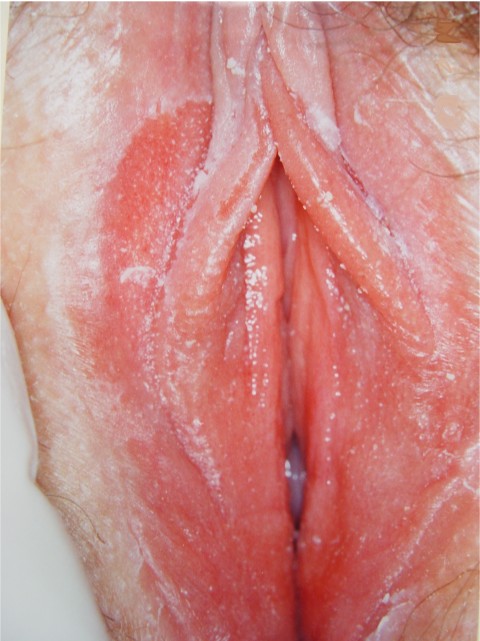
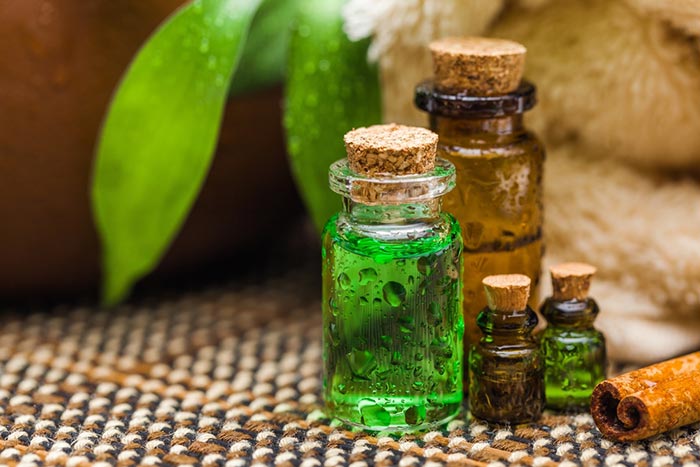

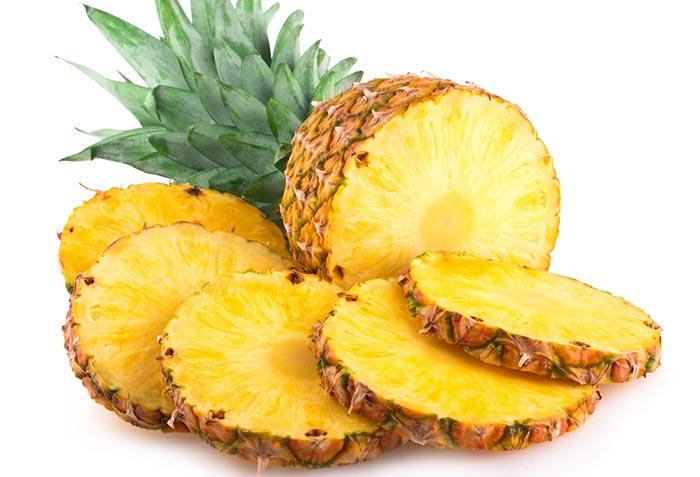

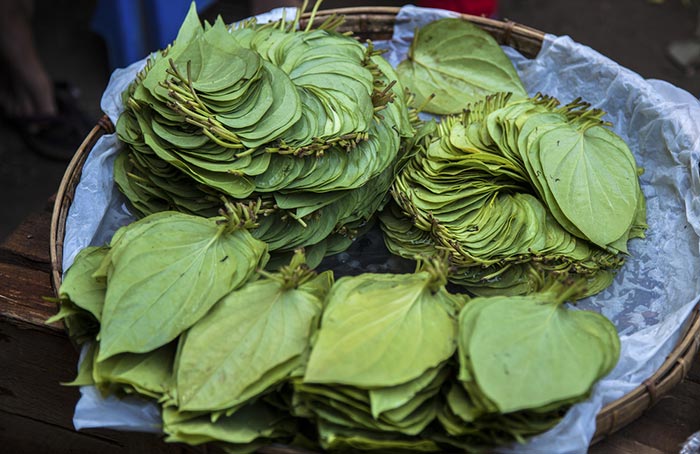












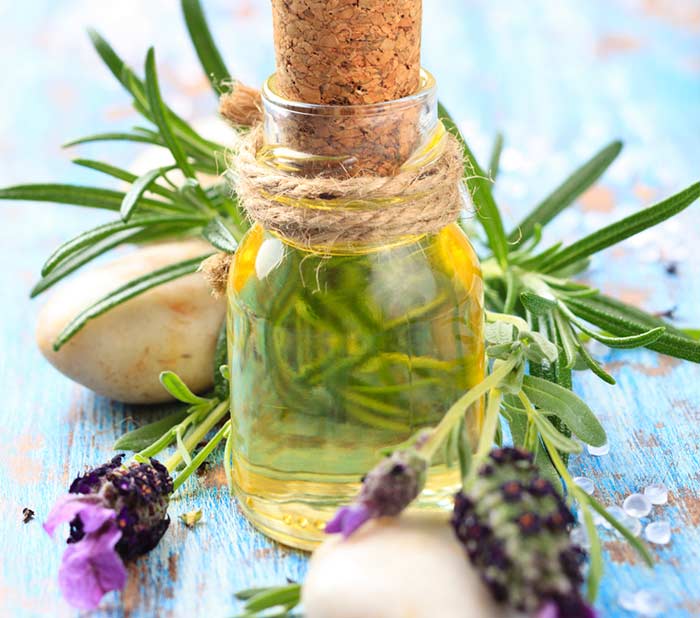
Visitor Rating: 5 Stars